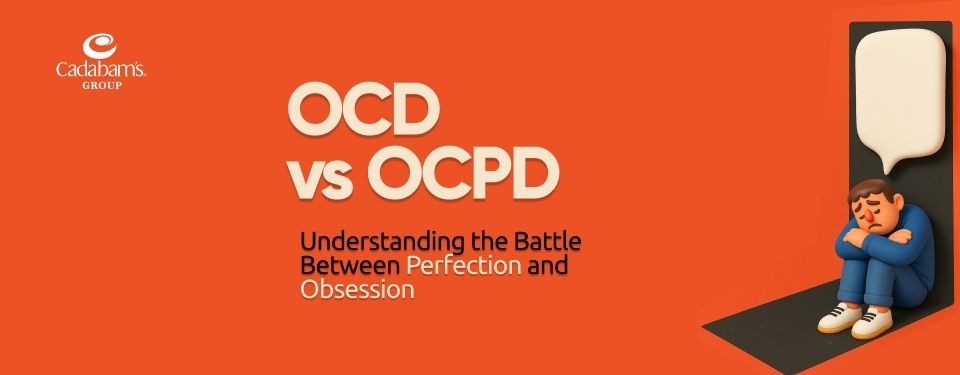Mr. Kumar is a 36-year-old man who works at Gopal Groceries. Every evening, after work, he goes back home to his wife and 4 daughters who all live together in a small house. As a kid, Mr. Kumar saw his father die of a terminal illness, during which he started praying to God frequently for his recovery. Even now, he makes sure to pray to God multiple times a day for his family’s well-being.
Recently, his wife had a minor health scare. Though she recovered, Mr. Kumar believed that he was responsible for her ill health. He believed that he had not prayed enough and his family was being punished for the same. In order to reverse this failure, he prayed for hours each day, to the point that he would not eat or drink, and only stopped when his wife felt better after a couple of days.
In the coming days, he continued to think about this incident and soon realised that he had been performing other odd behaviours. He had to switch the lights on and off again and again just to feel better. Some days, to reduce his anxiousness, he would ride the elevator multiple times. With time, Mr Kumar became more and more aware of these “compulsive behaviours”.
These actions and behaviors while out of the norm, are not necessarily harmful and may often be dismissed by the individuals and their close ones. However, they made Mr. Kumar and his wife realize that he had been following a pattern. He was continuously praying, repetitively counting and repetitively arranging things just to reduce his feelings of anxiety. He had been feeling a loss of interest in activities he usually enjoyed, irritability, and low mood. Upon seeking medical help, he was diagnosed with OCD.
What is OCD?
OCD or Obsessive Compulsive Disorder, is an anxiety disorder in which people have recurrent and disturbing thoughts (obsessions), and/or ritualistic behaviours (compulsions). It has a negative impact on an individual’s functioning and quality of life. Often, if the obsessions or compulsions are noticeable in public, people may feel shame for their actions and fear being labelled. OCD in India affects about 2% of the population and is commonly found in people who already have other mental health conditions.
Understanding Obsessive Compulsive Disorder
There are several forms of OCD, which broadly fall into one of these five main categories, wherein the themes often overlap between-
Checking: The desire to check is a compulsion that may be registered through actions of reassurance or checking. This desire comes from the obsessive fear that not doing these actions might cause damage, fire, leaks or harm to themselves or others.
Symmetry and Orderliness: The strong compulsion or desire to arrange everything in a specific way is usually caused by the fear that someone might get hurt or something may go wrong if a certain order is not maintained.
Ruminations and/or Intrusive Thoughts: To ruminate is to have a train of long, undirected, and unproductive thoughts over one theme. The individual typically cannot dismiss these thoughts and continues to indulge in them though they cause the person distress. Intrusive thoughts can be about cultural fears, inappropriate sexual thoughts, excessive worry about things in your life, etc. These thoughts are extremely unpleasant and very constant.
Contamination and/or Mental Contamination: The idea of contamination includes the fear of being dirty and that it could harm themselves and their loved ones. A part of this is mental contamination, where a person feels they are unclean internally. This is normally a result of past childhood abuse or maltreatment.
Hoarding: Hoarding includes accumulation of items, irrespective of their value and involves experience of distress when the person has to get rid of the items. It may/may not be considered a part of OCD, some individuals hoard for very specific obsessive fears which directly relate to OCD while others hoard for other reasons.
Irrespective of the type, each case of OCD involves three elements- the trigger, the avoidance, and the reassurance. Triggers are the original source of obsessional worry. They can be a physical object or internal mental thought. Avoidance is a compulsive behaviour where the person avoids the trigger objects, places and people so as to prevent distress. The person may seek reassurance as a compulsive response to the distress caused by obsessions; or it may simply be a way for them to seek support from others.
When it comes to Mr. Kumar, the trigger was his wife getting sick. He was reminded of his father’s loss. The avoidance is evident in his constant praying and checking compulsions, which he does for his family’s well-being and to avoid distress. The reassurance he sought must have been from his family. He must also have felt reassured when his wife’s health got better after his constant praying. But how did this come about?
Causes of OCD
The symptoms of OCD are considered to be an individual phenomenon; however, its severity, course, and outcome have to be seen in an interpersonal context. While exact causes of OCD are unknown, the risk factors include a mix of biological and environmental factors.
Biological Risk Factors:
- Brain Structures and Function: Several researchers mention the brain structures and functions to be the largest risk factor. Studies have also shown that the blood flow patterns associated with control are different for people with OCD. Impaired functioning in certain brain structures may cause individuals suffering from OCD to become more anxious about the perceived mistakes and want to repeatedly try to fix these mistakes, all in the form of compulsions.
- Neurotransmitters: Alterations in levels of serotonin (regulates mood and anxiety) and norepinephrine (regulates attentiveness) can also lead to OCD.
- Genetics: Genetic studies have shown that it is three times more likely for a person suffering from OCD to have a family member living with the same condition.
Environmental Risk Factors:
- Traumatic Events: Major stresses or traumatic life events have been found to be strong risk factors for OCD, especially childhood maltreatment. The symptoms of OCD may also appear within 6 months of childbirth. Some risk factors for OCD include complications during pregnancy or delivery, severe conflict, serious illness, or a traumatic brain injury.
Psychological Risk Factors:
- Comorbidities: The most common comorbidities found are major depression, social phobia, generalized anxiety disorder, and specific phobia. The obsessive aspect of it is often viewed to be associated with posttraumatic stress disorder (PTSD) and separation anxiety disorder; the contamination-cleaning dimension has been related to hypochondriasis; and the hoarding dimension has been associated with ADHD and tic disorders.
Is OCD Treatable?
OCD often takes a chronic course, as it takes 10.5 years on average for the individuals to enter the treatment. When asked if OCD is treatable, Madhuparna Sreemany, a counselling psychologist from Cadabam’s Group said, “While OCD might not be completely curable, it is definitely manageable through medication and psychotherapy. You can learn to manage symptoms using different therapies, key to which is also getting unconditional support from the people around you.”
Medication Management: Medications used for OCD include SSRIs (Selective Serotonin Reuptake Inhibitors) and SRIs (Serotonin Reuptake Inhibitors). These medications have a good influence on the mood and emotion of the individual. The process of determining the most suited medication for an individual is achieved on a trial-and-error basis and needs to be determined based on the needs of the individual with consultation from their psychiatrist.
Psychotherapy: Usually, medications are used along with several kinds of psychotherapies. Exposure Response Prevention Therapy (ERP) and Cognitive Behavioral Therapy (CBT) are the most widely used therapies used to manage anxiety and control compulsions. ERP tries to teach a person’s brain to respond differently to obsessions by tolerating anxiety and discomfort. CBT helps one identify, label, and reframe their thinking patterns.
Mindfulness, which teaches one to observe their feelings and thoughts in an objective fashion, is found to be effective. Muscle Relaxation, Meditation, Yoga and Massages are also seen to help make OCD manageable.
Mr. Kumar after five sessions involving Muscle Relaxation Therapy and Exposure Response Prevention Therapy (ERP) along with other modulations, felt that his anxieties had resolved to a certain level and also felt more confident in his approach towards managing OCD.
OCD Help- let’s reach out!
It may seem difficult to talk about one’s symptoms, it may seem that others will not understand, Mr. Kumar went through the same, too.
In order for one to better understand people diagnosed with OCD, a good place to start is by understanding that OCD is highly emotional in nature. The best way to deal with it is by arming oneself with empathy, compassion, and by willing to lend support. It is essential that one encourage treatment seeking.
One could and should always feel free to reach out to the professionals. Cadabam’s Hospitals is one of India’s leading mental health care, psycho-social rehabilitation centers. With more than 3 decades of experience, our large and multispecialty team consists of experienced psychiatrists, counselors, psychologists, family therapists and other specialists who work round-the-clock to curate a personalised treatment plan that caters to all your and your loved ones’ needs
At Cadabam’s Hospitals, we care for you and are with you every step of the way.
Reach out to us today for more information. Call us at +91 97414 76476 and take the first step towards treating Obsessive-Compulsive Disorder.
Disclaimer: The case study is fictional in nature, and the situations provided have been borrowed from multiple sources. (DOI: 10.4103/0972-6748.132932; https://aiamswp.org.in/a-clinical-case-study-of-individual-with-obsessive-compulsive-disorder-ocd-2/)
.webp)








